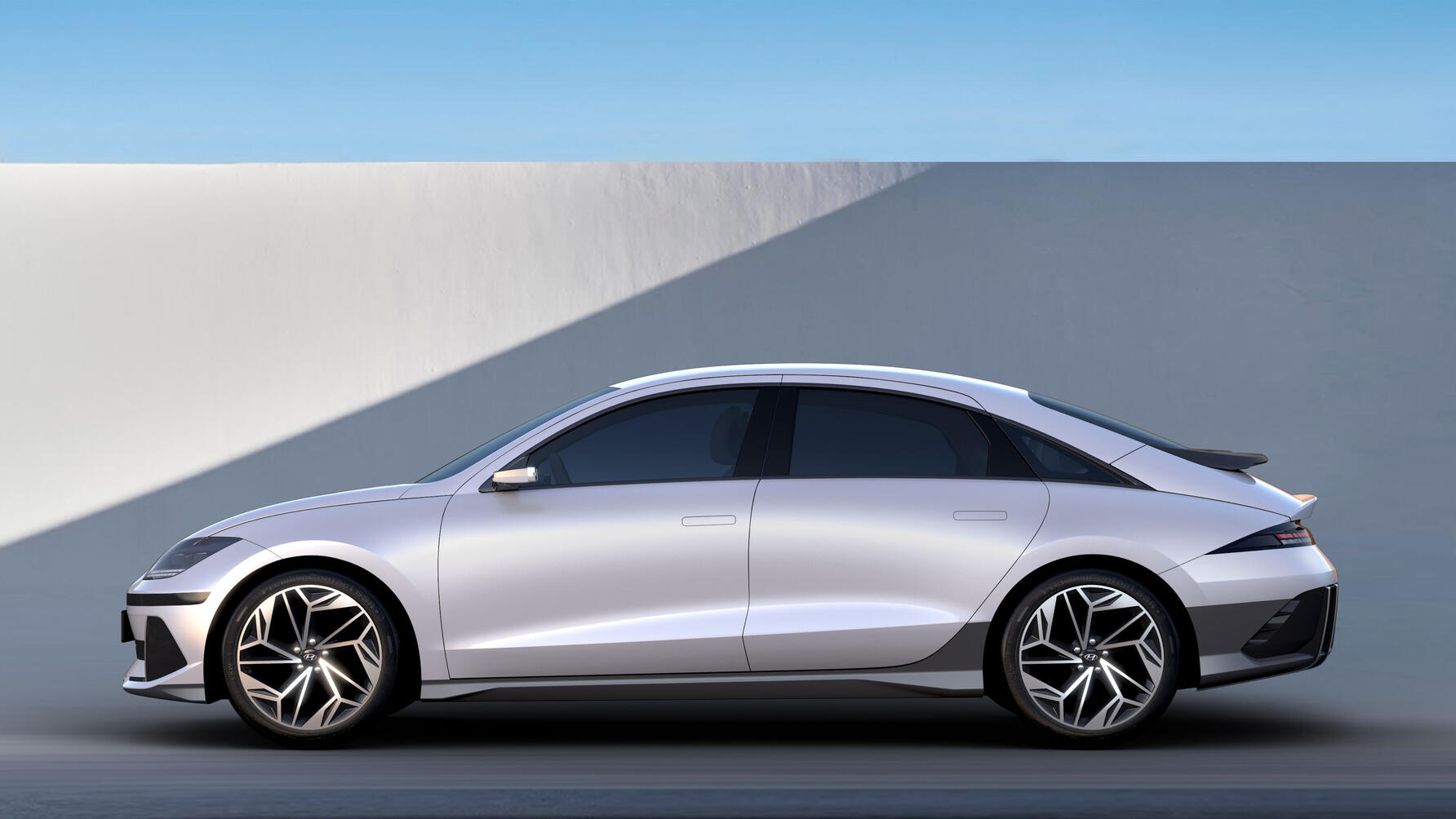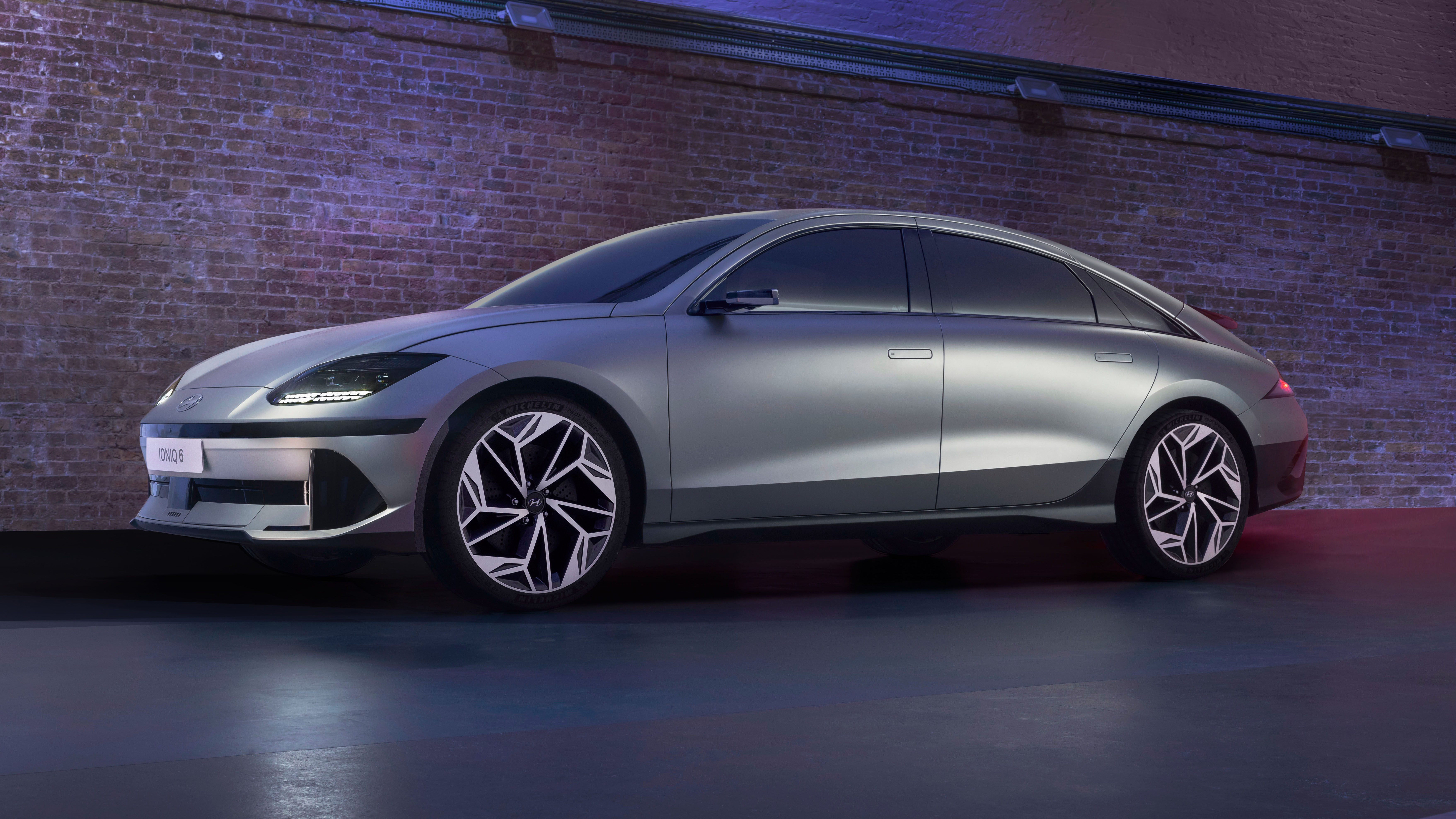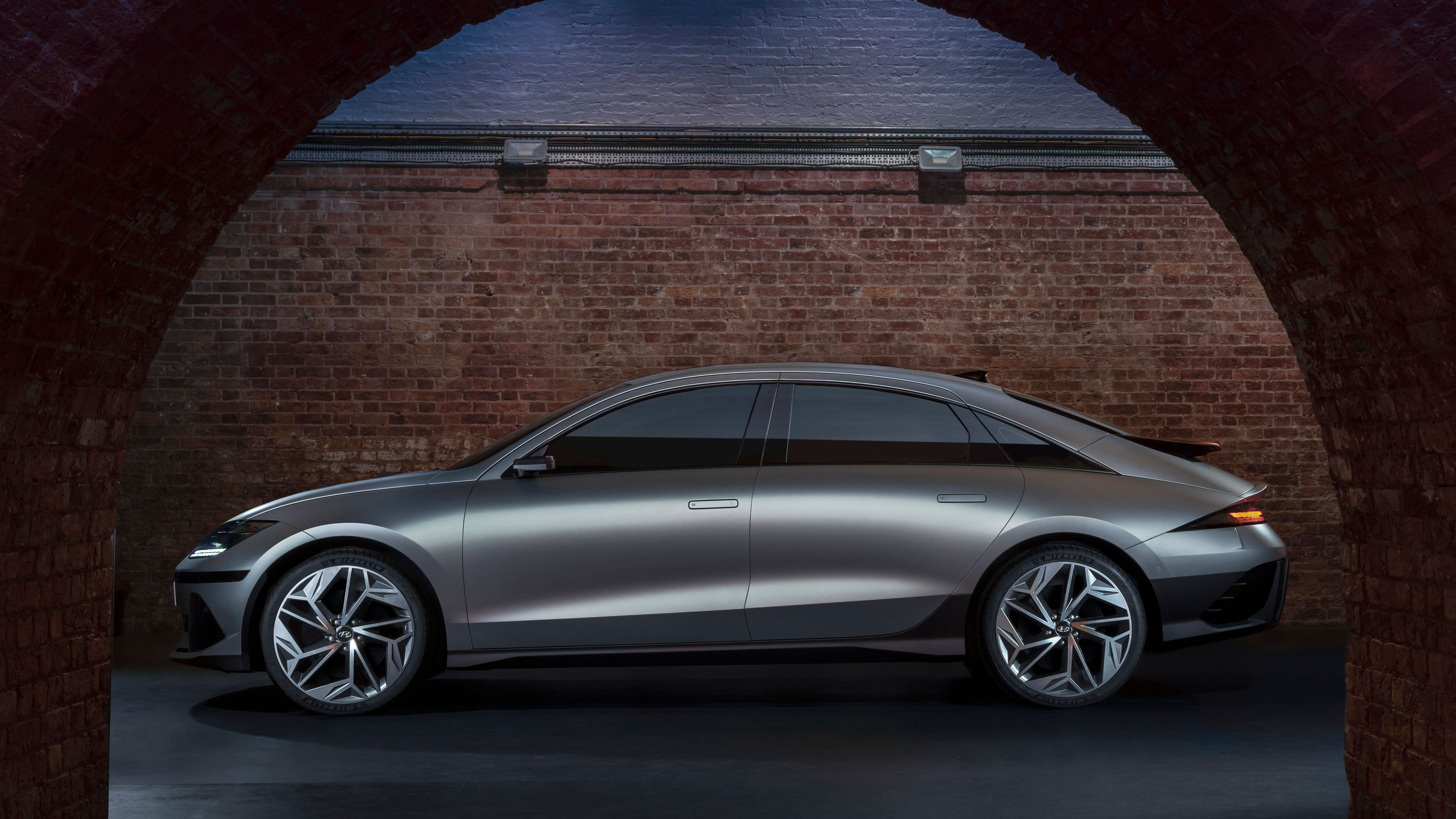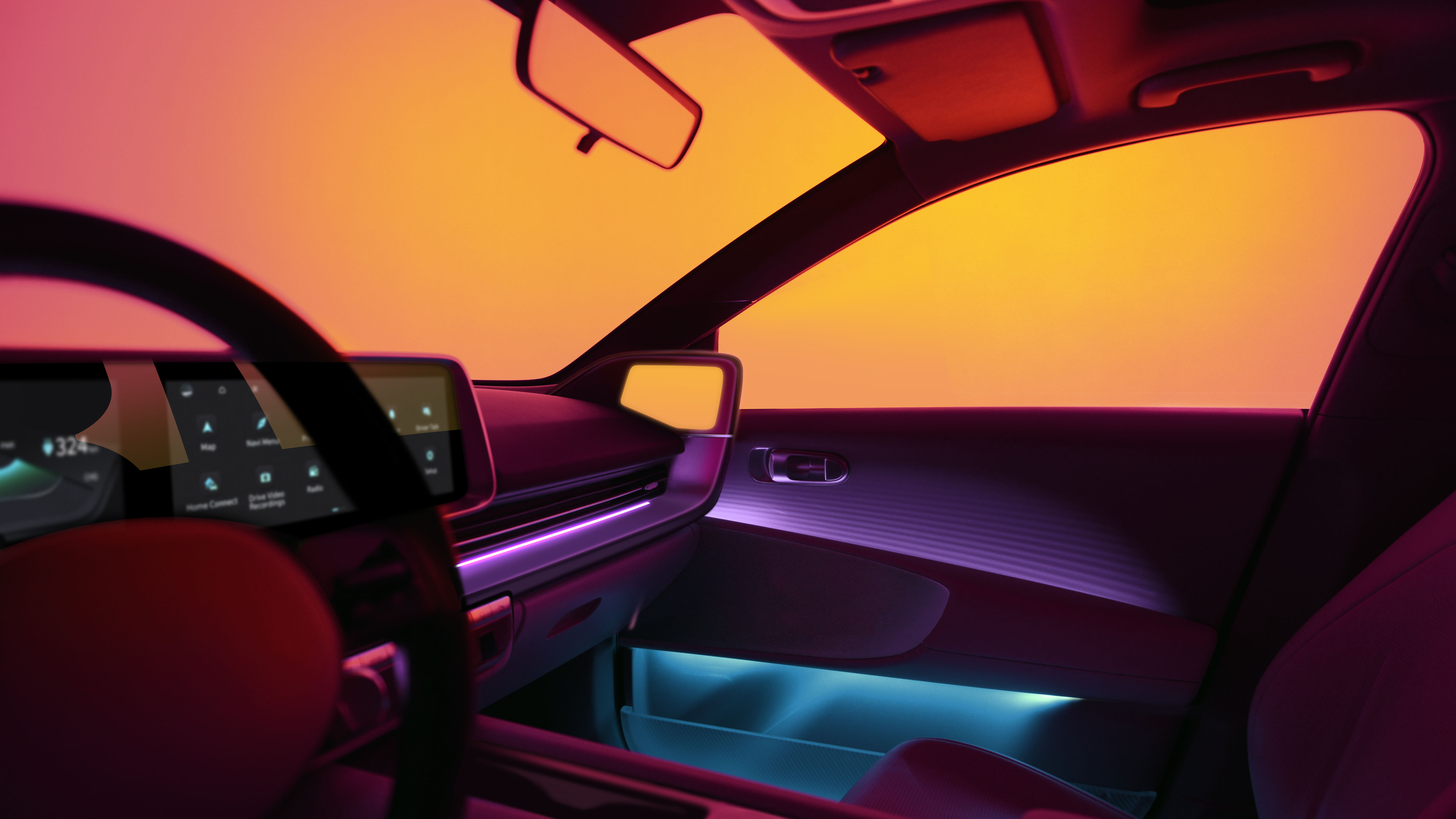
The new Hyundai Ioniq 6 EV was inspired by classic streamliners
While the 5 is a Seventies throwback, this takes inspiration from the Twenties and Thirties. The results are... challenging
We know what you’re thinking: has Hyundai’s design department just dropped the ball spectacularly for the first time in years? To put it kindly the new Ioniq 6 is, er, challenging, but you may need to do a bit of internet cross-referencing to fully assimilate what you’re looking at here, because this is a car that doesn’t shy away from its influences.
And what influences they are. Hyundai’s HG Wells-style time machine stopped off in the mid-Seventies for the rapturously received Ioniq 5, but this time we whirl further back to the Twenties and Thirties, a spectacularly creative time for automotive and transport design.
Back then, streamlining was all the rage, and the results were often fascinatingly barmy. Take the Stout Scarab, for example, designed by John Tjaarda (whose son Tom would later make a name for himself), an Art Deco and aviation-inspired masterpiece that also featured a unitary chassis and ingenious packaging. Or the one-off Phantom Corsair, commissioned by Rust Heinz (yes, the beans and ketchup Heinz) in 1938. Perhaps more pertinent is the Tatra 87, whose finned fastback was designed by Paul Jaray, who helped design those epic Zeppelin airships. Saab, too, had aviation roots, and its first production car, the 92, also gets a namecheck from Hyundai’s vice president of styling, SangYup Lee. See also the Douglas C-47 Skytrain, which actually did fly.
“The Thirties showcased the perfect combination of design and engineering,” he explains. “There was a big debate internally about whether we should call the new car Streamliner. The best design doesn’t create customers, it creates fans.”
Punchy words, to go with Hyundai’s generally punchy attitude. South Korean culture is currently cool, with unassailable emissaries in the form of Netflix’s biggest ever original series Squid Game and director Bong Joon-ho’s Oscar-snaffling film Parasite (we’ll skip over annoying boyband BTS).
And Hyundai’s design mojo is working overtime. You’ll recall that, like the Ioniq 5, the 6 was trailed by a memorable concept car, the Prophecy, which was due to wow showgoers at Geneva in 2020, until it became the first big automotive event to succumb to the pandemic. “We don’t do la-la land concepts,” says SangYup Lee. “We want to deliver.”
That’s the thing with those streamlined shapes: they look great but they’re difficult to execute
Now comes the real thing, which doesn’t quite manage to maintain fealty with the design study but gets impressively close. That’s the thing with those streamlined shapes: they look great but they’re difficult to execute. Remember how Audi’s original TT suddenly gained a spoiler for its rump when cars began falling over on autobahns? There’s a reason why the Ioniq 6’s posterior has two separate visual interruptions, but it still manages an outstanding drag coefficient of 0.21. That was once the province of science fiction, extreme aerodynamic slipperiness obviously a major aid to efficiency in an EV.
The Ioniq 6 comes with the predictable set of messaging, some of which may have got a little lost in translation on the journey from Seoul to Shoreditch. Let’s go with it for now. The shape embodies the concepts of ‘Sensuous Sportiness’ and ‘Optimistic Futurism’ – that’s another nod to the early Thirties – and aims to boost the emotional ties between humans and automobiles. It’s a nice idea, especially as electric cars are generally a bit low on the ‘fizz’, on account of not having a conventional, chemically explosive engine.
Full disclosure: a few people at TG don’t dig the Ioniq 6’s look, and are baffled why Hyundai hasn’t followed the path set out by the 5. It’s about differentiation, and maxing out on the possibilities offered by electrification. Rather than the old Russian doll approach to design – bigger or smaller iterations of the same form – Hyundai thinks in terms of a chess set. They look different and do different things, but they all clearly belong to the same family. The Ioniq 6 is the more selfishly sporting member of the squad. Does that make it the knight?
Top Gear
Newsletter
Thank you for subscribing to our newsletter. Look out for your regular round-up of news, reviews and offers in your inbox.
Get all the latest news, reviews and exclusives, direct to your inbox.
Accordingly, it uses the same Electric Global Modular Platform (E-GMP) as the Ioniq 5 (and Kia EV6 and Genesis GV60), which we’re familiar with and impressed by. On the 5 you have the choice of rear- or all-wheel drive, standard range 58kWh or long range 77.4kWh battery packs, and 400V or 800V charging. Plus that incredibly cool V2L – vehicle to load – tech that turns the car into a mobile power bank. The Ioniq 6 gets all this, and should improve on the 5’s 315-mile range, too.
And a new USP. Hyundai says there are three main pillars to the car: pixel lights, living space and sustainability. But that shape needs more explanation, so let’s bring in the head of Hyundai styling, Simon Loasby. (I hope he won’t mind me mentioning this, but his dad is former automotive engineer Mike Loasby, who helped shepherd the Seventies Aston Martin Lagonda saloon and the DeLorean into production. The man’s a hero.) Streamlined cars have a propensity to go banana bendy – not a technical term – and avoiding this was one of the main challenges.
“We had to balance out the shape to avoid that droop,” Loasby says. “You’ve got to counteract it with a line going the other way. So the main bone line that rises up balances it out. This is also not a low car, it’s got lots of headroom inside and a lot of interior space, so to disguise that we need long lines. There’s another line underneath that breaks up the height.”
The Ioniq 6’s wheelbase is 2,950mm, only 47mm shorter than the new Range Rover’s, its overall length 4,855mm. Hyundai’s very process driven engineers were persuaded to deviate from the numbers on the spreadsheet for aesthetic reasons, Loasby recalls. “We fought to get an extra 50mm into the wheelbase. We had to push the rear wheelarch to make the proportions work. It’s not easy and it’s not what we started with on a bit of paper, but the team achieved it and the car looks better for it.”
The contrast colour is made from upcycled end-of-life tyre pigment, and has the effect of slimming the car down. It’s 1.5m tall but doesn’t look it. Cost imperatives prevented the design team from hiding the door shutlines or using frameless glass, which is a pity. A retractable rear spoiler was off the menu for the same reason, a mid-level fixed spoiler and lower ducktail all enhancing the 6’s aero numbers even if they detract from the purity of the streamliner ethos. “We said to the aero guys, do what you need to do, and we’ll do it,” avers Loasby.
It’s a bit busy around the rear three-quarters, with visible shutlines for the boot, while vertical elements under the rear bumper anchor the shape and stop any incipient sag. The boot, meanwhile, is big enough for two golf bags, despite the constraints of the sloping rear. They play a lot of golf in South Korea.

From the front, well this is a car with funky headlights that doesn’t look like it’s depressed, or scowls like a Sex Pistol mid-gob. “We don’t want anything that looks unhappy or aggressive,” Loasby says. The smooth, low front helps aero; the black band hides the various sensors, cameras and so on. “It’s about integrating and reducing, although the technology is very important. We celebrate it but integrate it.” There are active air flaps that open for cooling and an air curtain intake. High pressure air is tidied up around the front wheels then reattached. Our car features the optional camera door mirrors, a modish choice but also another aero aid. They’re still not legal in every territory Hyundai exports to, so regular mirrors are available. Note the new H logo, which is almost flush with the aluminium bonnet.
The pixels? There are 736 of them on the Ioniq 6, and as well as forming part of the Ioniq design language, they also play various functional roles. “Remember those really early tennis arcade games?” Loasby says (Pong, we think he’s talking about). “It creates a positive memory for people of our age, but fast forward and today’s young generation is all over Minecraft. But then you can go to another age and the Korean alphabet, Hangul. It used to be a script, until King Sejong turned it into an alphabet in 1443. One of those letters looks like a perfect pixel. So it’s digital into analogue, it’s contemporary, but we’re also referencing a 600-year-old design. Which might make it the oldest design signature of any car ever.”
There’s more Eighties nostalgia: the pixellated, horizontal rear light bar is programmable, conjuring up memories of Eighties television show Knight Rider. It would be tempting to message tailgaters with something appropriately vituperative, but that’s at odds with Hyundai’s generally upbeat approach.
The interior, says its creators, is a “mindful cocoon”. The Prophecy had no steering wheel at all, and a moving dashboard.
The Ioniq 6 might be more conventional but it’s still pretty trippy for 2022. There’s no logo on the steering wheel; you get a series of four pixel lights that illuminate to show the state of charge, and flicker when you’re using voice activation. The door bins are uplit, and have a restful wave form. The lower storage area is transparent so you can see what you’re rummaging for. There’s dual colour-selectable lighting, in the front and rear, and speed-synchronised lighting. Go for the camera mirrors and the display inside is on a pair of wing tips at either end of the dashboard. “I’ll never forget one of the early design reviews,” Loasby says. “One of the guys had done the archetypal biro sketch, not on a napkin but a bit of A4 paper. He’d drawn a wing tip that had a screen, for an aerofoil look. It’s the best integration of those screens I’ve ever seen.”
They still work even with regular door mirrors. There are two 12.3in screens, identical to the set-up in the Ioniq 5, and the flat floor, minimalist seat design and open areas beneath the centre console underpin the whole “living space” aspiration. Some of the materials feel a bit thin in places, but there’s lots of sustainability; eco leather that uses flaxseed oil to reduce the use of chemical compounds, recycled plastics and fishing nets.
The Ioniq 6’s willingness to explore an era that predates the company’s existence is mischievous and suggests considerable self-belief. In the midst of a vast product range, it seems that electrification is giving the company permission to do something we should all aim for as often as possible: have fun.
Trending this week
- Car Review
BMW 1 Series
- Top Gear's Top 9
Nine dreadful bits of 'homeware' made by carmakers










